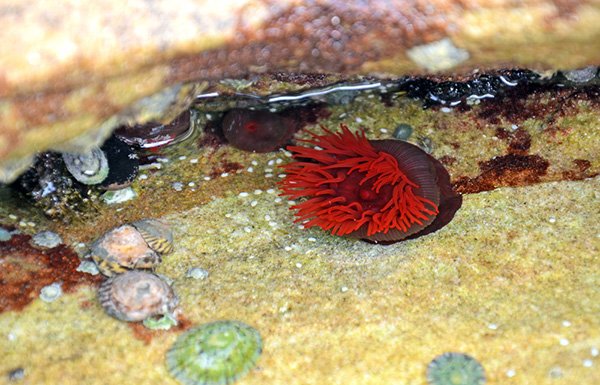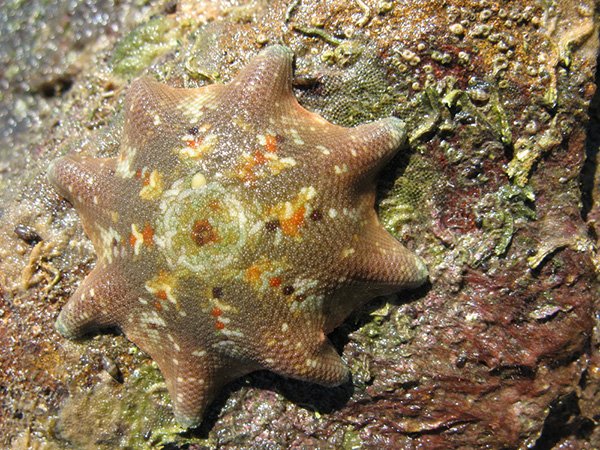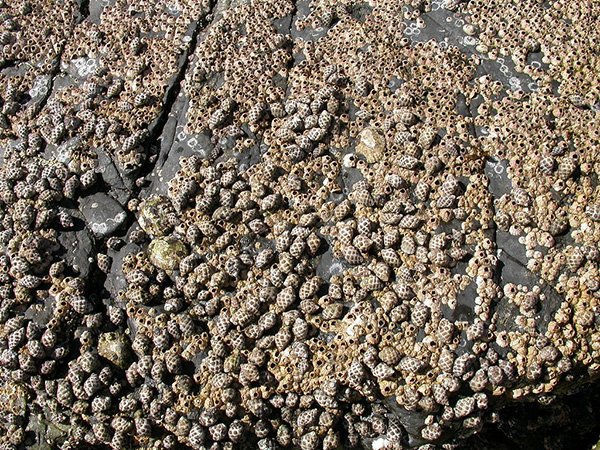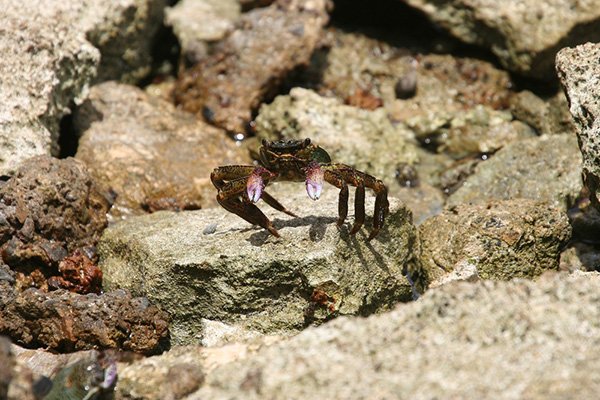Rock pools: tiny but complex underwater worlds

LIFE’S TOUGH in the narrow coastal strip that spans the highest and lowest tides. The plants and animals living here must withstand the relentless pounding of waves as well as prolonged exposure to sun and wind. In summer, temperatures may vary by 20°C in the space of a few hours. But for all the difficulties of living in such a harsh and changeable habitat, there’s one important reward: they’re safely beyond the reach of voracious marine predators.
1. Red waratah anemone
Actinia tenebrosa

(Image Credit: Karen Black/Shuttershock)
These anemones creep towards food or mount an attack on an unrelated waratah anemone. Young emerge fully formed from an adult’s mouth.
Size: 10 cm diameter
Distribution: Shark Bay, WA, to Heron Island, Qld, including Tas.
2. Purple sea urchin
Heliocidaris erythrogramma

(Image Credit: Steve Estvanik/Shuttershock)
Sea urchins withstand strong currents and heavy surf by wedging themselves in rock crevices. Stout spines protect them from water loss and predators.
Size: 10 cm diameter
Distribution: South and east coasts from Esperance, WA, to Heron Island, Qld
3. Blue-ringed octopus
Hapalochlaen maculosa

(Image Credit: Kaschibo/Shuttershock)
This octopus’s bite can penetrate a wetsuit and inject enough poison to kill in minutes. When threatened, its electric-blue rings glow.
Size: tentacle length 15 cm
Distribution: Shark Bay, WA, to Cape Jaffa, SA; Tas. coast (excl. Bass Strait); Bermagui, NSW, to Fraser Island, Qld
4. Cushion seastar
Patiriella calcar

(Image Credit: Robyn Butler/Shuttershock)
This stubby-legged starfish comes in an impressive array ?, of colours and anchors itself to rocks using hundreds of water-filled tubes, similar to suction cups, on its undersid
Size: 10 crricliameter
Distribution: Augusta to Esperance, WA; Port Lincoln, SA, to Fraser Island, Qld; Tas
5. Neptune’s necklace
Hormosira banksii

(Image Credit: Violaine Bavent/Flickr)
The “beads” of this seaweed contain water, to prevent desiccation, and gas, to help the plant float and obtain sunlight for photosynthesis. The dimples on the surface of the beads are the plant’s sex organs.
Size: to 30 cm
Distribution: Albany, WA, to Ballina, NSW, including Tas.
6. Blue periwinkle
Austrolittorina unifasciata

(Image Credit: Wikimedia)
These hardy molluscs congregate on rock shelves at densities of thousands per square metre.
Size: to 2.5 cm
Distribution: Shark Bay, WA, to Qld border, including Tas.
7. Variegated limpet
Cellana tramoserica

(Image Credit: jan Holm/Shuttershock)
These hardy limpets hunker on rocks until they are covered by water when they feast on microalgae.
Size: 6.5 cm
Distribution: Albany, WA,” to Hervey Bay, Qld, including Tas.
8. Mulberry whelk
Morula marginalba

(Image Credit: harry Rose/Flickr)
Morula marginalba This common mollusc bores holes through the shells of mussels, oysters and limpets and then uses its sharp tongue, called a radula, to cut up the animal and suck out the pieces.
Size: 2.5 cm
Distribution: Esperance, WA, to Ballina, NSW, including Tas.; Darwin to Cape Arnhem, NT
9. Swift-footed crab
Leptograpsus variegatus

(Image Credit: Stringer Image/Shuttershock)
These little nippers scuttle across rocks and into crevices in search of shelter or a meal of molluscs, algae, fish and sea urchins.
Size: 8 cm across the carapace
Distribution: Australia-wide
READ MORE:




